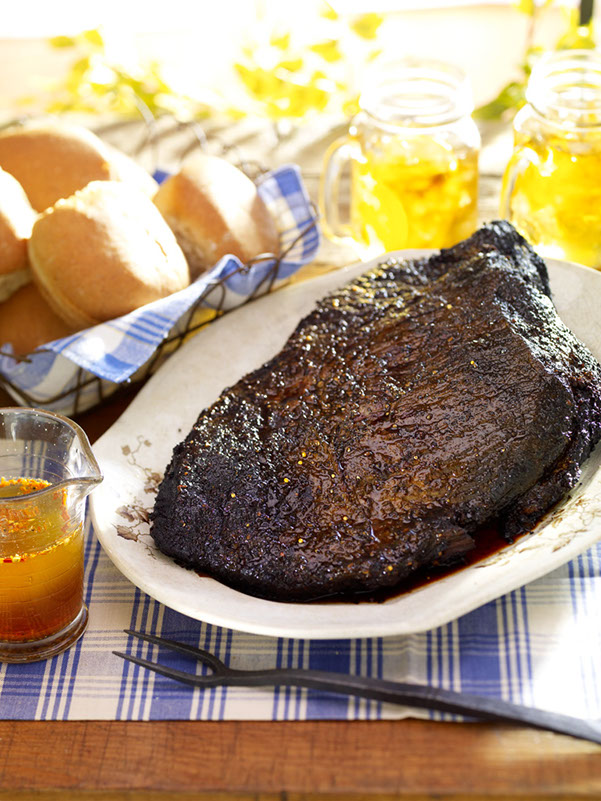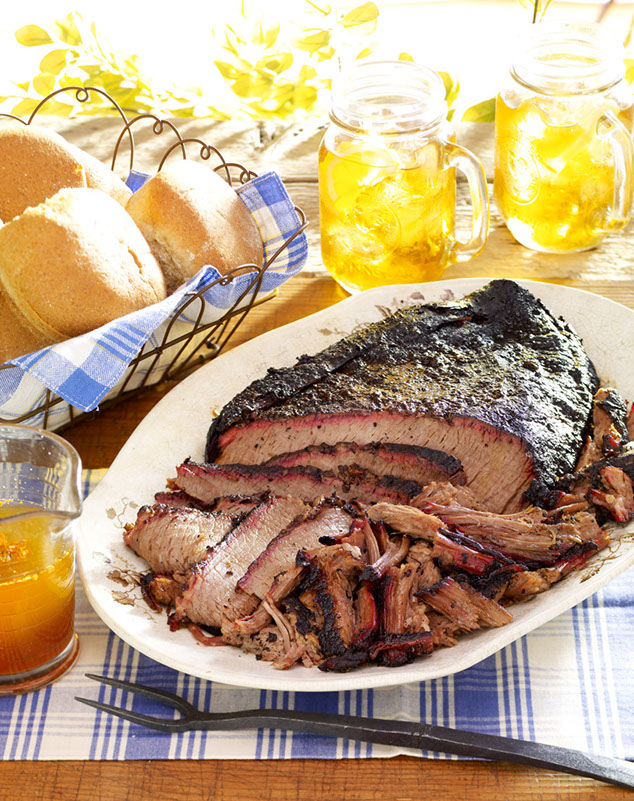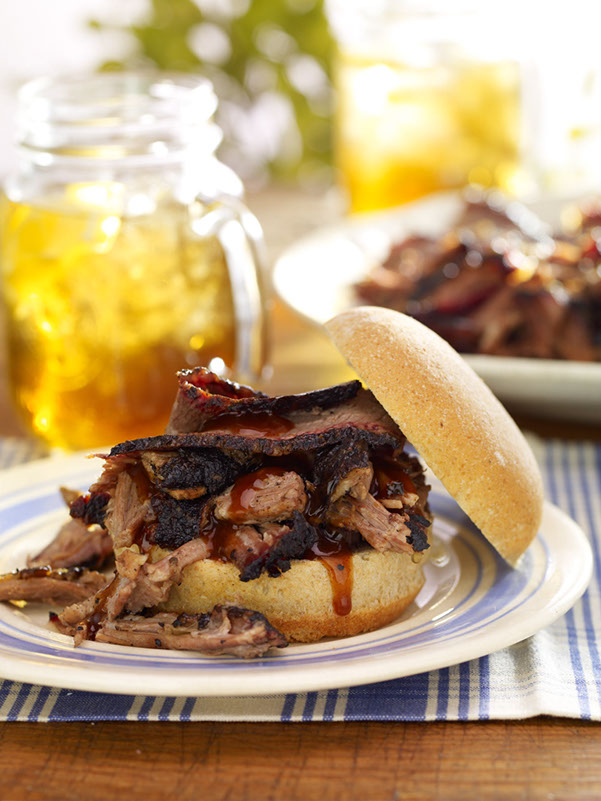For such a humble piece of meat, brisket sure gets a lot of attention.
From Passover mainstay to the center of attention at a family Sunday dinner to a great reason to have a backyard get-together on a cloudless summer afternoon, brisket’s big beefy flavor and typical ample size makes it large enough for a single piece to feed a hungry crowd. Its very nature brings people together to a communal setting, be it sit-down with the good china or an open-house buffet with paper and plastic. And no less noteworthy is the importance brisket played on cattle drives through hot, dry Texas prairies.
In days gone by, those who tended cattle—South American gauchos, the vaqueros of California and Mexico, and the cowboys of Texas—are often associated with specific cuts of meat. The gauchos of Argentina, Chile, and Brazil favored skirt steak, known as churrasco. The vaqueros are associated with Santa Maria barbecue, otherwise known as tri-tip. And Texas range riders are synonymous with smoked and barbecued brisket.
In each case, the cut of meat is not from the most tender and finely grained rib or loin. As always, the premium cuts fetched premium prices and were far too valuable to be eaten by drovers on the trail. They got what was left over.
Those cuts tended to be from working or supportive muscles that have coarser graining, varying amounts of marbling, connective tissue, and fat. Consequently, the meat from these muscles has a tough texture. Such cuts benefit from low-slow cooking processes to breakdown the muscle fibers and render a juicy, tender, and flavorful result.

Where to Start
The best brisket for unimaginably delicious Texas-style brisket is Wagyu or USDA Prime brisket. Both types are highly marbled, which means the brisket will baste itself from the inside throughout the barbecuing process, making it melt-in-your-mouth unbelievable.
Championship BBQ teams make “packer’s cut” brisket the de facto style. Packer’s cut means that the brisket’s four layers of lean and fat remain intact, untrimmed.
For the novice, packer’s cut may seem too fatty. However, a good deal of that fat renders and bastes the brisket from the top down while it is in the smoker so it is juicy and sumptuous when served. There is no question that fat equals flavor. So leave the fat on while it is cooking. The fat that remains can be easily trimmed away to your preference before bringing it to the table.
Depending on the degree of marbling, estimate 30 to 50 percent shrinkage and loss of trimmed fat from raw to platter-ready.
While some prefer to cook the brisket au naturel, most choose to coat all surfaces of the brisket liberally with a dry rub.

In the Smoker
Low-and-slow smoking is key to getting a tender result. With smoking temperatures hovering between 200 and 225ºF, estimate 1 hour smoking time per pound of brisket. Bringing the brisket up to an internal temperature of about 195ºF ensures that it will be fall-apart tender.
Traditional Texas brisket is smoked over oak for a clean, smoked flavor. Mesquite mixed with apple wood imparts a denser smoked flavor with a distinctive flavor imprint.
With good ventilation controls, a smoker can be set up to run all night long with one load of wood. But be prepared, a 14- to 16-hour smoking time for brisket is not uncommon. If you prefer not to leave your smoker running all night, you can remove the brisket from the smoker a few hours before it is done and bring it up to temperature in your oven set to the same cooking temperature.
Using a sauce for mopping the brisket as it smokes is optional, depending on the thickness of the fat cap and interior fat layer. A mop, however, adds flavor to the beef and keeps it moist while it cooks. Mopping sauces usually include an acid such as vinegar or lemon, a fat such as oil or butter, a sweetener such as apple juice or sugar, and other seasonings, herbs, and spices.
Mop the brisket on the hour and check the brisket’s internal temperature.
Our recipe for Lobel’s Smoked Wagyu Brisket includes a dry rub and mopping sauce made legendary at the Food & Wine Classic in Aspen.

On the Platter
Deconstructing a smoked and barbecued brisket into presentation condition begins by removing most of the fat cap. Next, separate the point from the interior layer of fat. Then, remove most of the fat from the flat. With the flat and point separated, you can slice the flat across the grain into thin slices—about ¼ inch. The point can be sliced into large piece and then pulled. Or both the flat and point can be chopped coarsely and mixed together. A good douse of mopping sauce in the mix adds moisture and flavor when brought to the table.
The only thing left to do now is stand back and watch your hungry horde descend upon and devour your handiwork. Be prepared for spontaneous applause and adulation—you are hero for a day. So take a bow and grab a plate of your own.
Have you ever smoked your own Texas-Style BBQ Brisket? What sort of smoking vessel do you use? What type of wood? Do you have a favorite mopping sauce recipe?



Leave Your Response